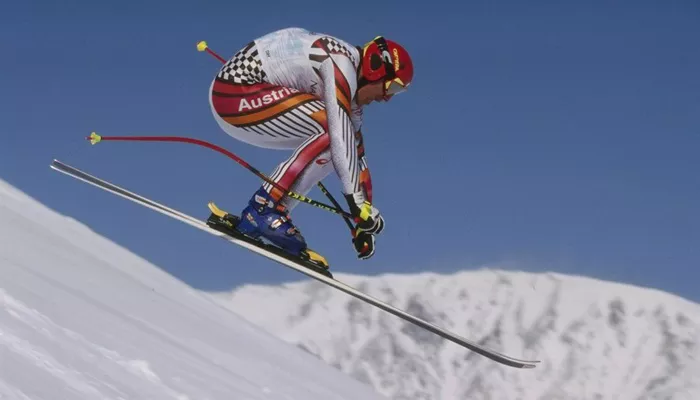Alpine skiing, also known as downhill skiing, is one of the most exhilarating and widely practiced winter sports in the world. Defined by its high-speed descents, technical turns, and challenging terrain, alpine skiing has become a cornerstone of winter sports culture, particularly in the mountainous regions of Europe and North America. But where did alpine skiing originate? Understanding its roots requires delving into the history of skiing itself, tracing its transformation from an ancient means of transportation to a globally recognized sport.
The origins of alpine skiing can be linked to the snowy landscapes of Scandinavia and Central Europe, where early skiing techniques were developed for survival and travel. Over centuries, skiing evolved into a recreational and competitive pursuit, leading to the establishment of organized alpine skiing as we know it today. This article explores the historical roots of alpine skiing, the key developments that shaped the sport, and how it became an integral part of winter sports culture.
The Ancient Origins of Skiing
Before alpine skiing became a sport, skiing served a fundamental purpose for survival in harsh winter conditions.
1. Early Evidence of Skiing in Prehistoric Times
Skiing has been around for thousands of years, with archaeological evidence pointing to its use in prehistoric societies.
Rock Carvings: Ancient rock carvings in Norway and Sweden depict humans using primitive ski-like devices.
Ski Artifacts: The oldest known skis, found in Russia and Scandinavia, date back over 8,000 years.
Practical Use: Early skis were primarily used for hunting and transportation across snow-covered landscapes.
2. The Role of Skiing in Scandinavian Culture
The Scandinavian regions played a crucial role in the evolution of skiing, particularly in adapting it for practical and military use.
Viking Influence: Norse mythology and Viking sagas reference skiing as an essential skill.
Military Applications: Scandinavian soldiers used skis in warfare, particularly in Norway and Sweden during the 16th and 17th centuries.
Traditional Ski Races: Competitive skiing events were held in Norway as early as the 18th century, paving the way for modern ski competitions.
The Emergence of Alpine Skiing
While early skiing focused on cross-country and utility-based travel, alpine skiing developed as a distinct sport in the mountainous regions of Central Europe.
1. The Birth of Downhill Skiing in the Alps
The Alps, particularly the regions of Austria, Switzerland, and Norway, became the birthplace of modern alpine skiing.
Early Recreational Skiing: The 19th century saw an increase in recreational skiing, particularly in Alpine villages.
Ski Resorts: European mountain communities, such as St. Anton in Austria and Davos in Switzerland, became early centers for ski tourism.
Introduction of Ski Lifts: The early 20th century saw the development of ski lifts, making alpine skiing more accessible.
2. The Influence of Mathias Zdarsky
Mathias Zdarsky, an Austrian ski pioneer, played a critical role in developing alpine skiing techniques.
The First Ski Manual: In 1896, Zdarsky published “Die alpine Lilienfeld Skilauf-Technik,” the first book dedicated to downhill skiing.
Alpine Skiing Techniques: He adapted the traditional Norwegian skiing style to suit the steeper Alpine slopes.
Ski Pole Innovations: Zdarsky introduced the use of a single long pole to aid in balance and steering.
The Evolution of Alpine Skiing as a Competitive Sport
With the development of specialized skiing techniques, alpine skiing transitioned from a leisure activity to an organized competitive sport.
1. The Founding of Ski Clubs and Competitions
First Ski Clubs: In the late 19th and early 20th centuries, ski clubs were founded across Europe, particularly in Austria, Switzerland, and Germany.
First Alpine Ski Races: The earliest recorded downhill ski race took place in the Swiss Alps in the early 20th century.
Hannes Schneider’s Contribution: Austrian skier Hannes Schneider developed the Arlberg technique, which became the foundation for modern ski instruction.
2. The Introduction of Alpine Skiing in the Olympics
1936 Winter Olympics: Alpine skiing was introduced at the Winter Olympics in Garmisch-Partenkirchen, Germany.
FIS World Championships: The International Ski Federation (FIS) established official alpine skiing world championships in the 1930s.
Growth of Competitive Skiing: The inclusion of alpine skiing in global competitions helped popularize the sport worldwide.
Modern Alpine Skiing And Its Global Influence
Alpine skiing has continued to grow, with technological advancements and the expansion of ski tourism making it more accessible.
1. The Growth of Ski Resorts and Tourism
European Expansion: Major ski resorts developed across the Alps, including Zermatt, Chamonix, and St. Moritz.
North American Influence: Skiing spread to the Rocky Mountains, with resorts like Aspen and Whistler gaining popularity.
Asian and Southern Hemisphere Resorts: Japan, Chile, and New Zealand have also become major ski destinations.
2. Technological Advancements in Skiing Equipment
Ski Design Innovations: Skis have evolved from wooden planks to modern composite materials, improving performance and safety.
Advanced Ski Bindings: Innovations in ski bindings have reduced injury risks and enhanced skier control.
Groomed Trails and Snowmaking: Resorts now use advanced snowmaking systems to maintain optimal skiing conditions.
3. The Popularity of Alpine Skiing Today
Skiing in the Winter Olympics: Alpine skiing remains one of the most watched events in the Winter Olympics.
Freeride and Freestyle Skiing: The sport has diversified, with extreme skiing, freestyle, and backcountry skiing gaining popularity.
Ski Schools and Training Programs: Modern ski schools offer professional training, making skiing accessible to people of all skill levels.
Conclusion
Alpine skiing originated from the ancient traditions of Scandinavian and Central European cultures, evolving from a practical means of transportation into a globally celebrated sport. The development of skiing techniques, the rise of competitive racing, and the expansion of ski resorts have all contributed to the sport’s widespread appeal. Today, alpine skiing continues to thrive, drawing millions of enthusiasts to the slopes each year. As technology and training methods advance, the sport will only continue to evolve, ensuring its place in the future of winter sports.

